The Crucial MX300 750GB SSD Review: Micron's 3D NAND Arrives
by Billy Tallis on June 14, 2016 9:00 AM ESTMixed Random Read/Write Performance
The mixed random I/O benchmark starts with a pure read test and gradually increases the proportion of writes, finishing with pure writes. The queue depth is 3 for the entire test and each subtest lasts for 3 minutes, for a total test duration of 18 minutes. As with the pure random write test, this test is restricted to a 16GB span of the drive, which is empty save for the 16GB test file.
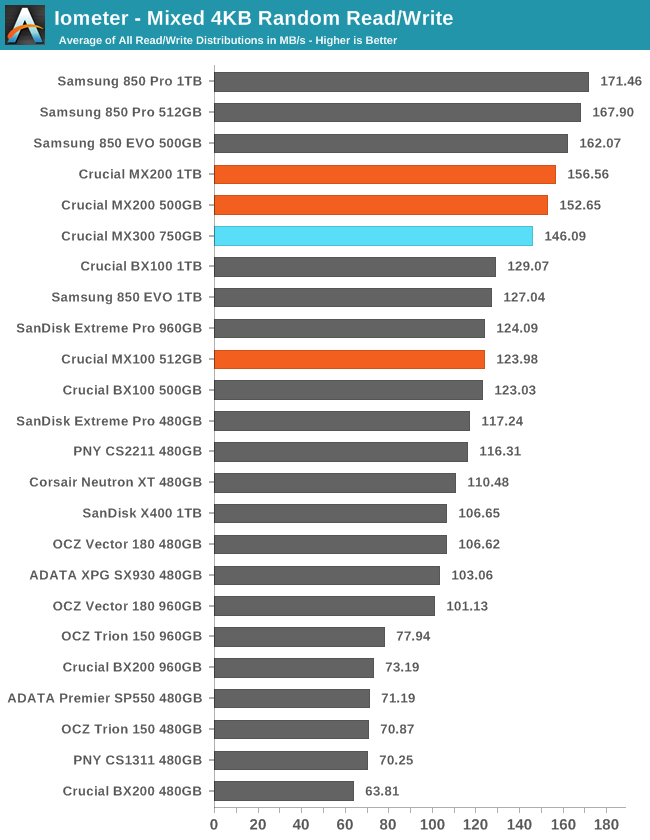
Despite poor random read speeds, the MX300 is only slightly slower than the MX200 on mixed random workloads, and is faster than most MLC drives.
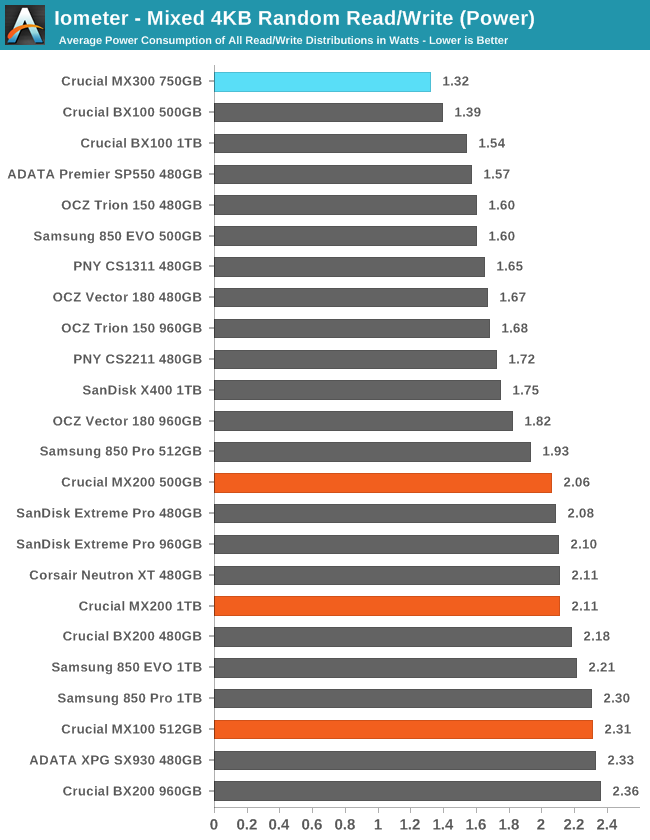
Once more setting a power usage record, the MX300 is more efficient than even the BX100.
 |
|||||||||
The MX300 manages to never decrease in performance when the proportion or writes increases, showing that its SLC write caching is working very effectively. Power consumption doesn't begin to increase until the test is almost completely writes.
Mixed Sequential Read/Write Performance
The mixed sequential access test covers the entire span of the drive and uses a queue depth of one. It starts with a pure read test and gradually increases the proportion of writes, finishing with pure writes. Each subtest lasts for 3 minutes, for a total test duration of 18 minutes. The drive is filled before the test starts.
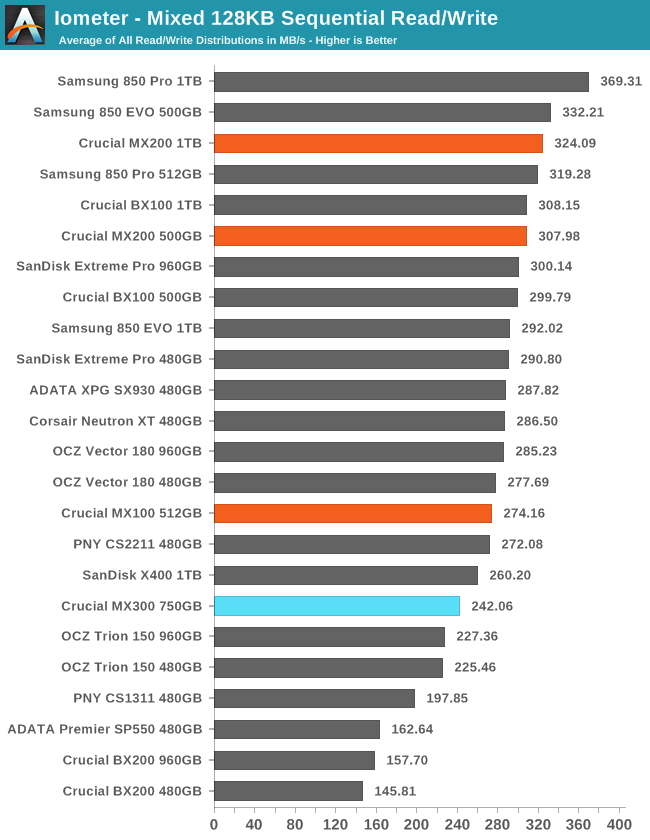
Since SATA drives all perform about the same on sequential reads, rankings on this test are determined mainly by sequential write performance and whether the controller can process the mixed workload effectively. The MX300 is slower than the SanDisk X400 but faster than the other planar TLC drives.
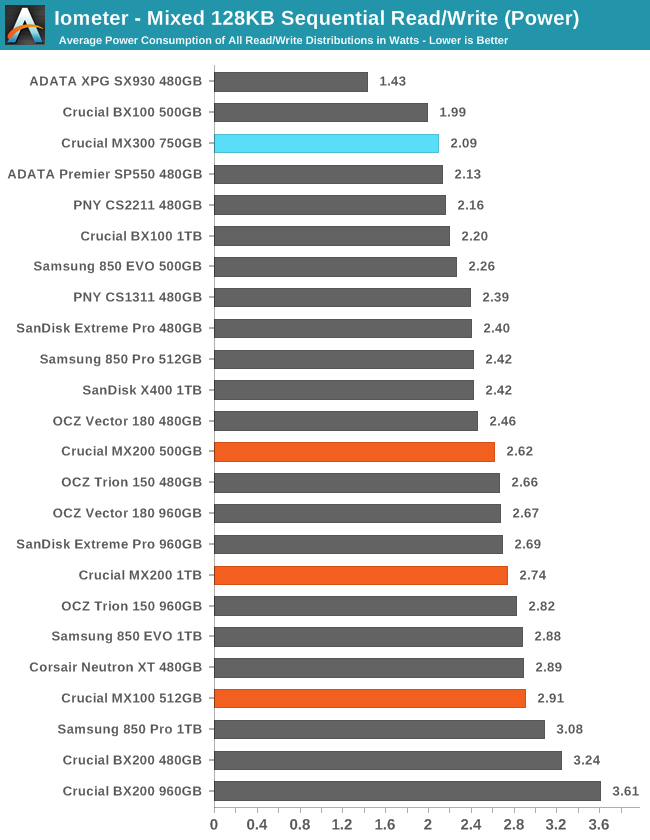
With another third place ranking for power usage, the MX300 beats all the planar TLC drives on efficiency but is unremarkable by MLC standards.
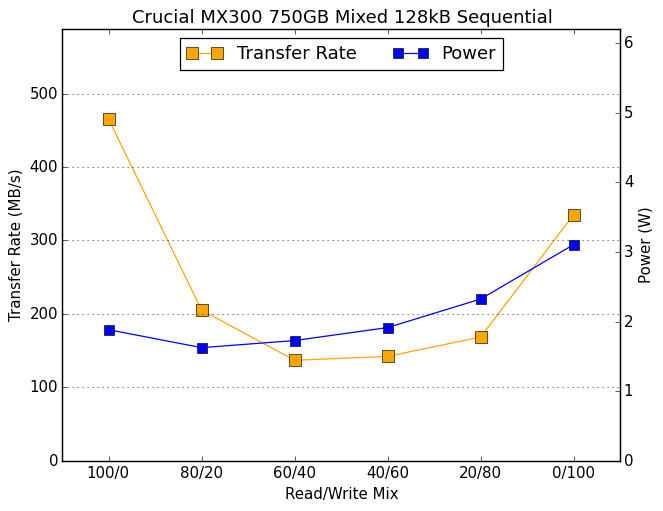 |
|||||||||
The MX300 bottoms out around 126MB/s which would be respectable for a planar TLC drive, but the MX200 never drops below 200MB/s.










85 Comments
View All Comments
PVG - Sunday, July 3, 2016 - link
Does anyone know the cell size of Micron's 3D TLC?Jimster480 - Tuesday, July 5, 2016 - link
Haha the performance is horrible for the price.Seriously MX200 kills it which means Transcend SSD370s kill it too.
Even the crappy X400 kills it.... where is the Ultra II on the list? I'm sure it kills it also.
3D nand sucks.
Weasle - Monday, August 15, 2016 - link
These comments show that people don't understand the durability of this drive. Since it's using the 3D-Nand technology that Samsung first adopted, this drive has a better durability rating than a Samsung 850 Pro. Like holy shit.. It uses TLC memory too! It's a TLC drive that's more durable than a MLC drive. It's also a very good priced drive. from $0.26 to $0.24.. That's amazing pricing lol. I don't fucking know why people are complaining.ZapNZs - Monday, September 12, 2016 - link
3D-NAND for the lulz'ers?...I can coat a turd with 24k gold, but at the end of the day it's still crap. And this sure is crap...shame on you Crucial! Given this is [by design] an inferior product to the MX-200, they should have named it something other than the MX-300. TLC has inferior endurance, inferior real-world write performance, and inferior error correction capability. So here we have another TLC drive that is priced almost as high as Transcend's 370, but the 370 uses MLC...MADE FROM MICON'S OWN PREMIUM NAND SUPPLY. Don't count on this drive to give anywhere near the reliability or longevity of the venerable MX-200. This is like changing movie night up from The Godfather to Freddy Got Fingered. Yay Micron!TimAhKin - Friday, November 25, 2016 - link
Got this just now for £100. I think that for this price it's a really good deal.